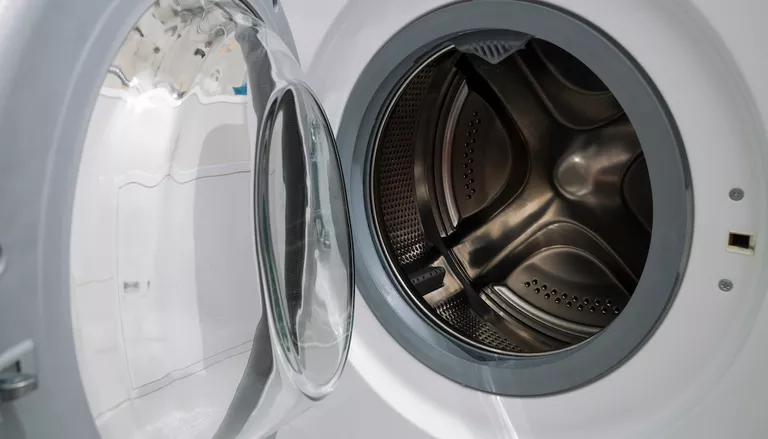Find local pros for your project
Tell us what you’re looking for and we’ll show you pros right for the job, with prices.
Updated
Written by Evan Crowther
If your existing washer is beyond repair, it's time to replace it. One of the first decisions to make is whether to buy a top-load or front-load washer.
Can't decide which one to buy? Here's an in-depth comparison of front-load washers vs. top-load washers. Discover the pros and cons of each option, and you can determine the ideal washing machine for your home.
Better for… | Front-loader | Top-loader |
Lower upfront costs | X | |
Lower water usage | X | |
Less noise | X | |
Stain removal | X | |
Faster wash cycles | X | |
Shorter drying times | X | |
Washing delicate items | X | |
Ease of use | X |
Top-load washers will be familiar to most homeowners. This type of washing machine is more common in homes than front-loaders despite using more water and power. The drum is upright with the loading door on the top of the machine.
Related: How to clean a top-loading washing machine (the right way).
 Although top-load washing machines are more common, any homeowner who has been to a laundromat will recognize a front-load washer. This style of washing machine has a loading door on the front.
Although top-load washing machines are more common, any homeowner who has been to a laundromat will recognize a front-load washer. This style of washing machine has a loading door on the front.
Their efficiency has made them more popular with environmentally conscious homeowners in recent years. Like top-loading washers, front-loaders have their pros and cons.
Related: How to clean front load washer in 5 steps.
Buying a washing machine is a long-term commitment, so choosing the right model is important. Following these tips will help you select the best type of washer for your home.
Before you start researching washing machines, take a look at the one you already own. Think about the things you like and dislike about it. Is it a front-loader or a top-loader? These factors will give you a better idea of what you want in your new washing machine.
There are a wide range of price points for washing machines. Determine in advance how much you can comfortably spend on a washer. Consider both the upfront cost as well as the cost of operation. This entails energy, water, and maintenance costs.
A front-load washing machine is more expensive initially, and top-load washers are cheaper upfront. But top-loaders can cost more in the long run because they use more water. You may prefer the energy savings a front-load machine offers over time.
Not only does saving energy and water reduce your monthly expenses, but it also reduces your carbon emissions. If energy efficiency is an important factor to you, look for an ENERGY STAR-certified washer.
Generally, front-loaders are more efficient. But you can also find high-efficiency top-loading washing machines on the market.
Think about the space where you’ll install the washing machine. You may want to consider a quieter machine if it’s near a bedroom or living area. Front-loaders are generally quieter, but some modern top-loaders offer features that can reduce noise and vibration.
You should also determine what size machine will fit in your laundry area. Stacking front-loaders may save floor space. However, make sure your laundry room has the space for a door if you get a front-loading washer.
Make a wish list of features you want your new washing machine to have, and go from there. For some people, upfront cost is their top priority, so they may choose a top-loader. Those who want to lower their water usage (and save money on bills) may go with a front-loader.
Deciding which features are most important to you will ultimately help you determine which washer is right for you.
Some washing machines are relatively simple to install yourself. For more complex washers, you may want to hire a professional for help. An appliance installation technician can often advise you on the type of washing machine that’s best for your home.
Download the Thumbtack app today to gather free estimates and schedule a service call with a top-rated pro near you.
Front-load washers are quieter than top-loaders because they use a gentle tumbling motion to wash clothes, not an agitator.
The horizontal drum creates much less vibration and banging noises than top-loading washers. However, some top-loading machines offer sound-dampening features — but their agitator might still make some noise. You can also reduce the noise from a top-loader with acoustic foam or padding.
It's true that front-load washing machines are becoming more popular. However, high-efficiency top-loading washers are more common for homes.
There are a few reasons for this spike in popularity. Front-loaders use less water than most top-loaders. They are quieter and generally more effective at cleaning soiled clothes. You can also stack many types of front-loaders, making them a good choice for homeowners with limited space.
Tell us what you’re looking for and we’ll show you pros right for the job, with prices.